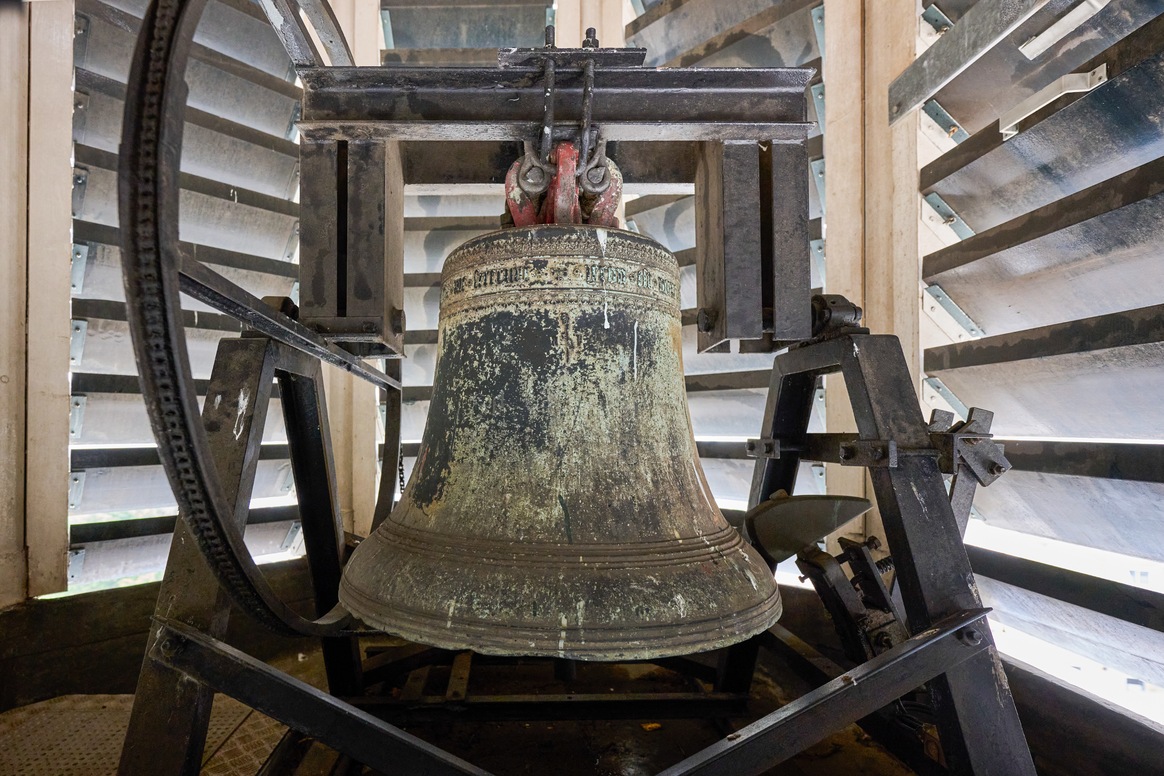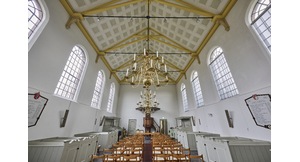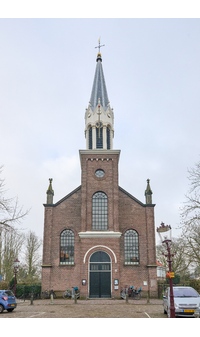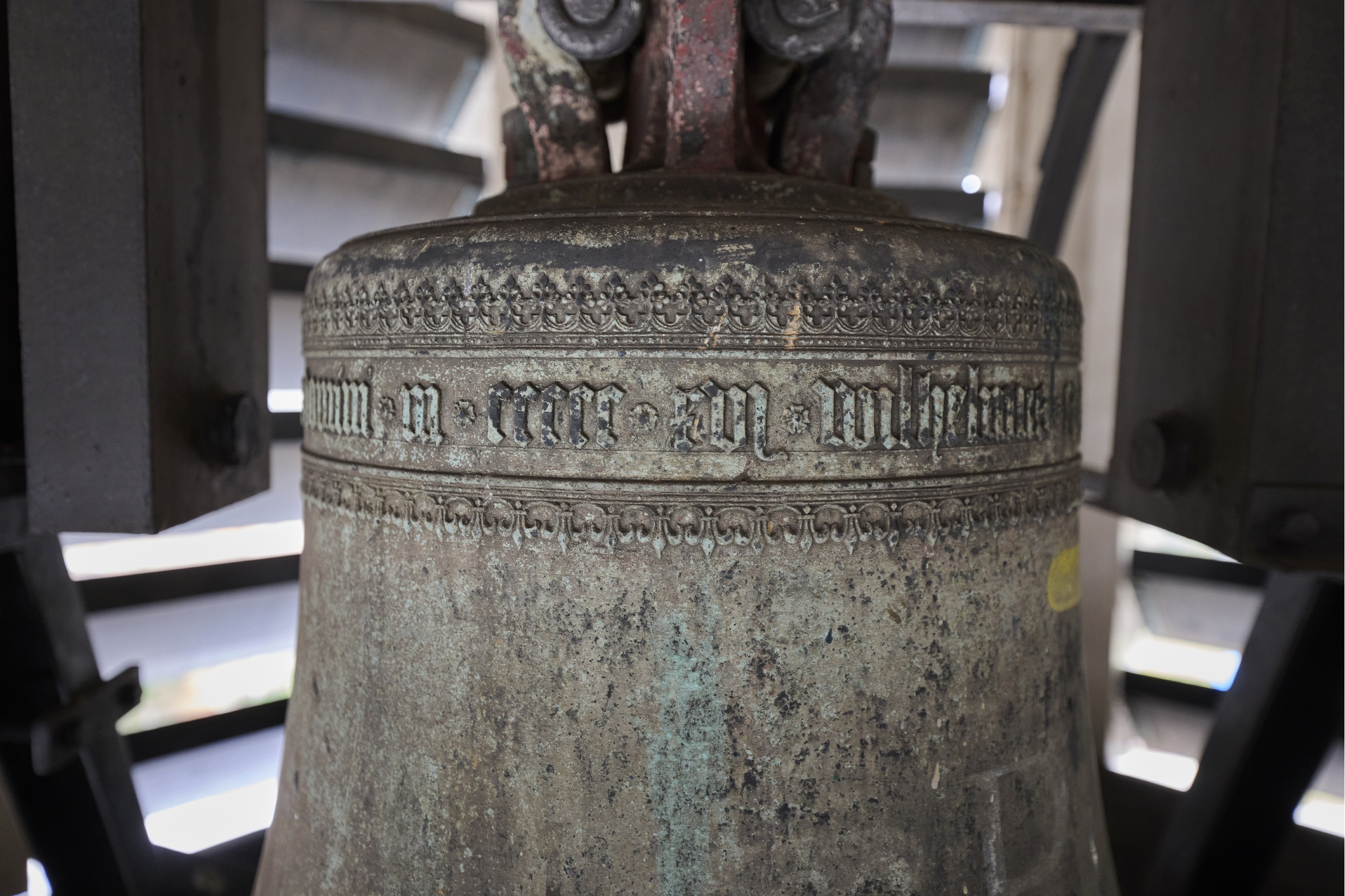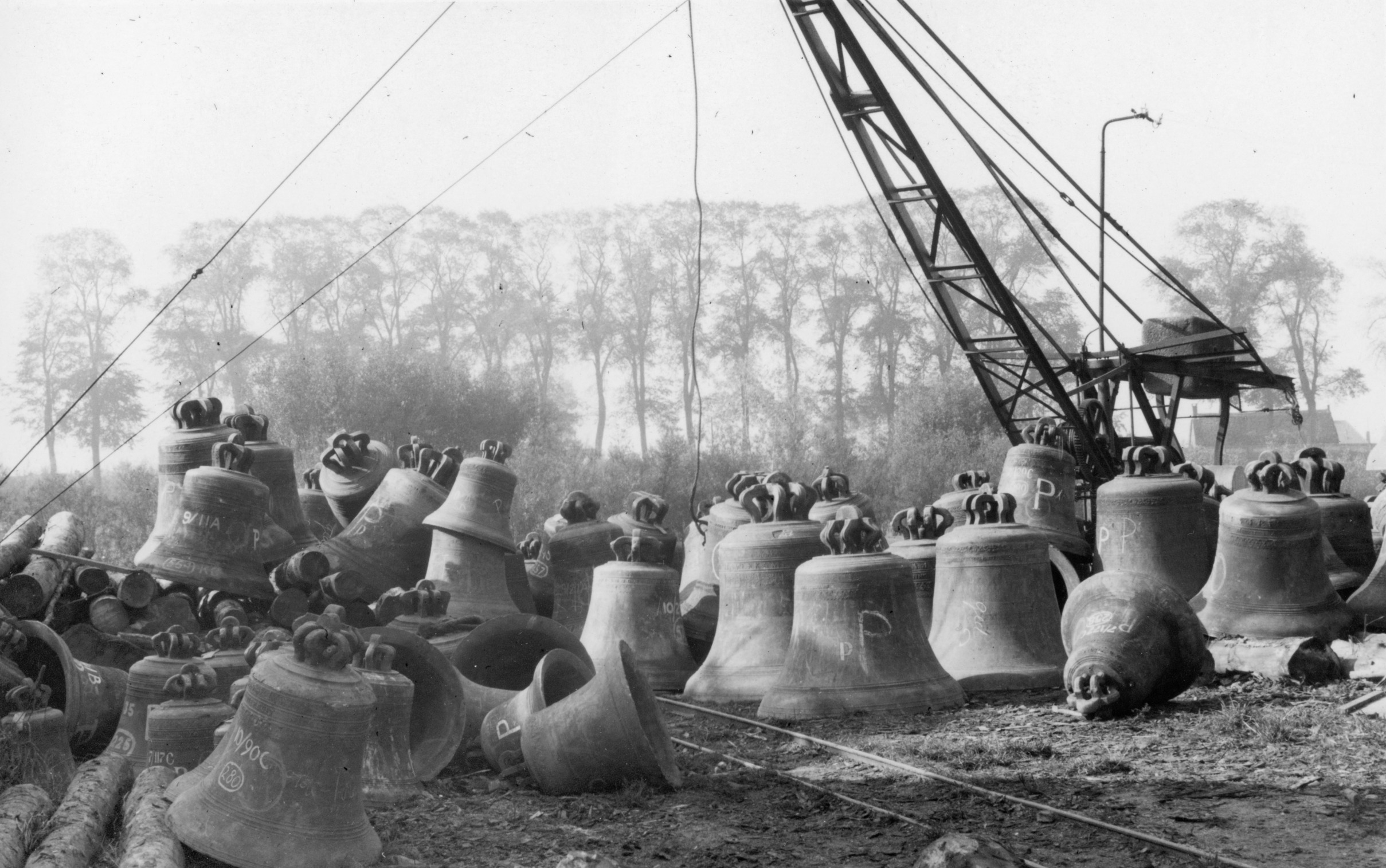Over the centuries, attempts have often been made to silence the Sloterkerk's swinging bell.
Location
Sloterkerk
Osdorperweg 28
Type
Church
Religious community
Protestant Church in Amsterdam, formerly known as Dutch Reformed Church in Amsterdam
Object
Bronze swinging bell with Latin text
Maker and date
Willem en Jasper Moer
1516
Visit
In the bell tower
"My name is Jeron, in the year of the Lord 1516 brothers Willem and Jasper Moer made me".
This text is written in Latin on the swinging bell of the Sloterkerk. It was common in the Middle Ages for a church's swinging bell to be given a name, often that of a saint. According to Catholic tradition, the bell is consecrated and used, among other things, to call for church services. Medieval people believed that consecrated bells possessed powers. Ringing during a funeral, for example, was believed to ward off evil spirits. Also, ringing the church bells could 'break' lightning.
After the Alteration, Catholic traditions that could lead to 'superstition, mis-geloove, orte ergernisse' were no longer allowed. This certainly includes the ringing of church bells at funerals, according to Protestants. Although officially banned, old traditions are sometimes hard to stop. In 1718, for example, in the Sloterkerk 'half an hour geluijt' for Mrs Neeltje Krijnen. Before her death, Neeltje lived on the Overtoom and was 'huyzvrou van Klaaz van der Laan'. She is buried in the church. She did have to pay extra for both the 'luyen' and burial in the church.
Alteratie
In 1578, the Catholic city government of Amsterdam was deposed. A Protestant city council took its place. The consequence of this change (Alteratie in Dutch) was that, from that moment on, the Reformed Church became the only church that was allowed to manifest itself publicly. Catholic churches and monasteries were confiscated and given new functions.
Also in the French era - almost a century later - rules are drawn up on ringing church bells. Public expressions of religion are no longer allowed. Ringing church bells to announce services falls under this. In Amsterdam, the 'ringing of bells when burying corpses' was also abolished, because it was considered a 'religious ceremony of the Roman Catholics'. In Sloten, however, 'ringing the bells' during funerals continued throughout the French era.
During the Second World War, the ringing of bells finally stopped in Sloten. Bell Jeron - like many other church bells - is requisitioned by the Germans. The purpose is to melt down the bronze for war purposes. Fortunately, Jeron was found after the war and returned to its church tower in Sloten, where it can still be heard at church services, weddings and funerals, among other occasions.
Vera Mijnheer
Employee Protestant Church Amsterdam
In collaboration with
Marcel Jacobs
Churchwarden Sloterkerk
Bert Stilma
Church member of the Sloterkerk and secretary Friends of the Sloterkerk Foundation
Last edited
July 14, 2025
Bell 'Jeron', Willem and Jasper Moer, 1516, bronze, diameter: 77 cm. Collection Protestant Church Amsterdam. Photo Robert Westera.
Exterior and interior: photo Robert Westera.
Bell 'Jeron', detail, Willem and Jasper Moer, 1516, bronze, diameter: 77 cm. Collection Protestant Church Amsterdam. Photo Robert Westera.
Overview of temporarily removed and stored bells. Probably at Spijk, 1942/1943, digital scan of a photograph, photographer unknown. Clock requisition collection 1942-1943 Rijksdienst voor het Cultureel Erfgoed, document number: KLV-6x6-0041.
Archief van de Hervormde gemeente te Sloten, 329, Stadsarchief Amsterdam.
E., I.H. van, ‘Het luiden van de kerkklokken in Amsterdam’, Amstelodamum 41 (1954) 26-30.
Nieuwenhoven, H. van, Klokkenvordering 1942-1943: inventarisatie verricht in opdracht van de Directeur van het Rijksbureau voor de Monumentenzorg in 1939, in samenwerking met de Nederlandse Klokken- en Ogelraad ; gekoppeld aan de administratie van de Firma P. Meulenberg te Heerlen in opdracht van de Duitse bezetter (deel I en II) (Huizen 1996).
Tempelmans Plat, C.W. Luidklokken, klokluiden en klokkestoelen (Baarn 1974).
Stilma, B., De Sloterkerk in kort bestek (Amsterdam 2018).


